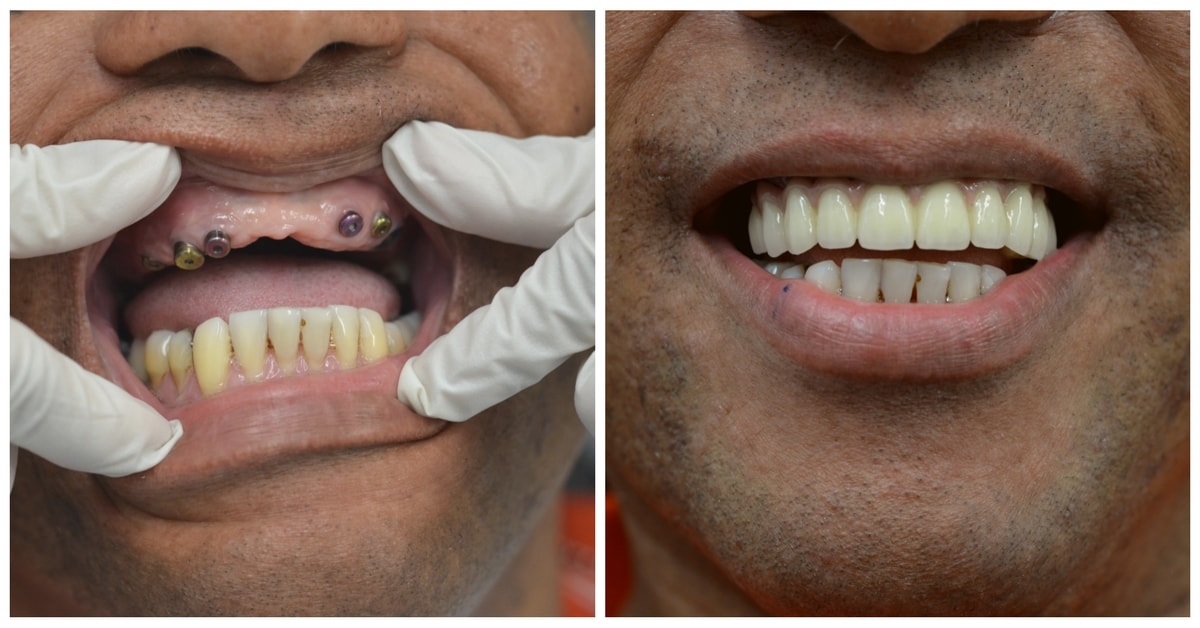The Main Principles Of Dental Implants
Table of ContentsDental Implants Can Be Fun For EveryoneA Biased View of Dental ImplantsThe 45-Second Trick For Dental ImplantsDental Implants for Beginners
are medical devices operatively implanted into the jaw to recover a person's ability to chew or their appearance. They supply assistance for artificial (fake) teeth, such as crowns, bridges, or dentures. When a tooth is shed due to injury or illness, an individual can experience problems such as fast bone loss, defective speech, or adjustments to eating patterns that lead to pain.

Framework of The Dental Implant System choosing oral implants, talk to your dental service provider regarding the possible advantages and dangers, and whether you are a candidate for the procedure. Points to take into consideration: Your general health and wellness is an essential consider establishing whether you are a great candidate for dental implants, the length of time it will require to recover, and exactly how long the implant may remain in place.
Cigarette smoking may impact the healing procedure and decrease the long-term success of the implant. The recovery procedure for the implant body might take numerous months or longer, during which time you commonly have a short-term joint instead of the tooth. the dental implant treatment: Very carefully adhere to the oral hygiene guidelines provided to you by your dental copyright.
The smart Trick of Dental Implants That Nobody is Discussing
Implant failure can lead to the need for an additional surgery to fix or change the implant system. Brings back the ability to chew Brings back aesthetic appearance Helps maintain the jawbone from diminishing due to bone loss Maintains the wellness of the surrounding bone and gum tissues Helps maintain adjacent (nearby) teeth secure Enhances high quality of life Damages to bordering natural teeth during dental implant positioning Injury to the surrounding cells throughout surgery, such as sinus perforation Injury throughout surgical treatment (as an example, crack of surrounding jawbone) Insufficient feature, such as really feeling like the teeth do not attack together usually An experience that the tooth hangs or twisting in location resulting from an abutment screw loosening Implant body failing (looseness of the dental implant body) due to systemic infection, which might be much more most likely in patients with unchecked diabetes mellitus as a result of local infection in bone and try this gums supporting the dental implant body due to postponed recovery, which might be most likely in clients that smoke Difficulty cleaning up the gum tissues around the dental implant, causing bad dental health Without treatment gum disease Post-surgical numbness because of nerve impingement or damages Always alert health care providers and imaging professionals that you have oral implants prior to any kind of magnetic vibration imaging (MRI) or x-ray treatments.
FDA is not familiar with any type of unfavorable occasions reported for MRI or x-ray procedures with dental implants. Oral implants systems are commonly constructed from materials that follow global consensus requirements of the International Organization for Standardization (ISO) or ASTM International. These criteria have details of what makes a risk-free material.
Various other materials such as gold alloys, cobalt-based alloys, titanium alloys, or ceramic products are in some cases used. The safety and security accounts of these products are popular. Oral implant systems are assessed according to international agreement criteria. Biocompatibility screening, to show that bodily call with the tool does not cause problems like irritability or allergic reaction, belongs to the assessment that assists ensure the materials in the oral implant system are risk-free and do not cause negative impacts when implanted in people.

Little Known Facts About Dental Implants.
Some people are not qualified for oral implant surgical treatment. It is for dental cosmetic surgeons to operate people with: severe illnessuncontrollable metabolic diseasebone or soft tissue condition or infectionIf these problems are dealt with, an individual can have the surgical treatment. Dental Implants. In, oral surgeons avoid operating people with: If people with any one of the above undergo dental implant surgical treatment, there is a greater risk of the implant stopping working
Some individuals have a jawbone irregularity that stops sufficient bone for a dental implant from establishing. The cosmetic surgeon will certainly then make use of a bone or bone alternative to repair and develop up the location.
Dental implant surgery is a personalized procedure. It's not the exact same for everybody. However the following gives a basic introduction of what you can expect your dental expert, oral surgeon, periodontist or prosthodontist to do: Position the implant operatively. Provide you time to recover. Attach the article and final crown, bridge or denture.
Next, your surgeon article will very carefully position the oral implant into your jaw. If your implant is near the front of your mouth, your dental practitioner will certainly make a temporary tooth for you to put on up until you recover.
The 25-Second Trick For Dental Implants
Your service provider can inform you what to anticipate in your situation. During the healing stage, your jawbone must fuse to the oral implant. This process, called osseointegration, is important for security and lasting success. This process can take anywhere from 3 to 9 months. In some situations, it might take much longer.
As soon as your dental implant heals, your dental practitioner can affix the abutment (tiny adapter blog post) and your final repair (crown, bridge or denture). This normally takes regarding one hour to finish and might need a second official website minor surgical treatment. You shouldn't really feel any pain throughout your oral implant treatment due to the fact that your supplier will use medication to numb your gum tissues.
Comments on “The Of Dental Implants”